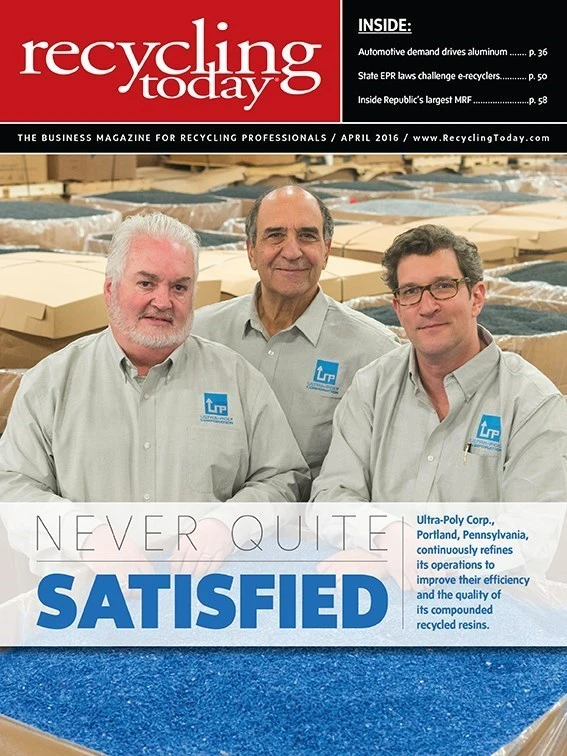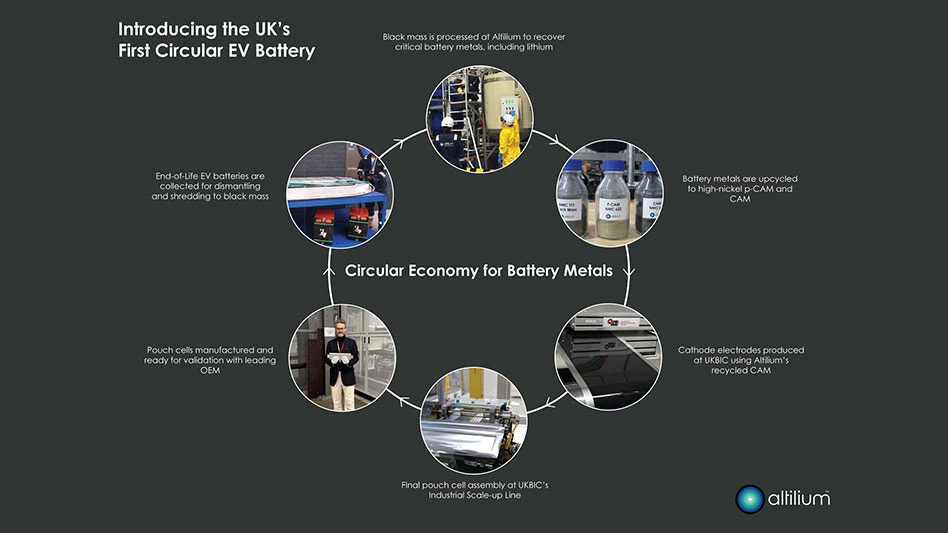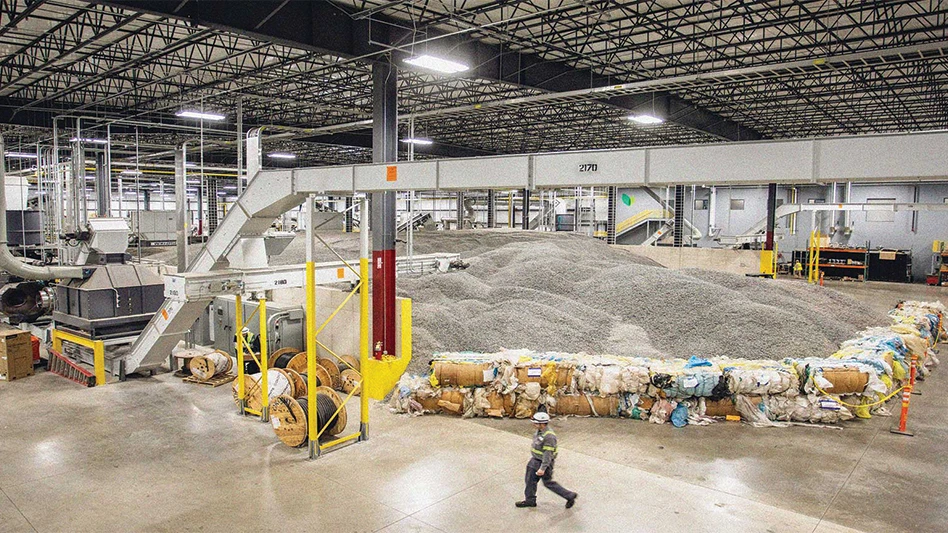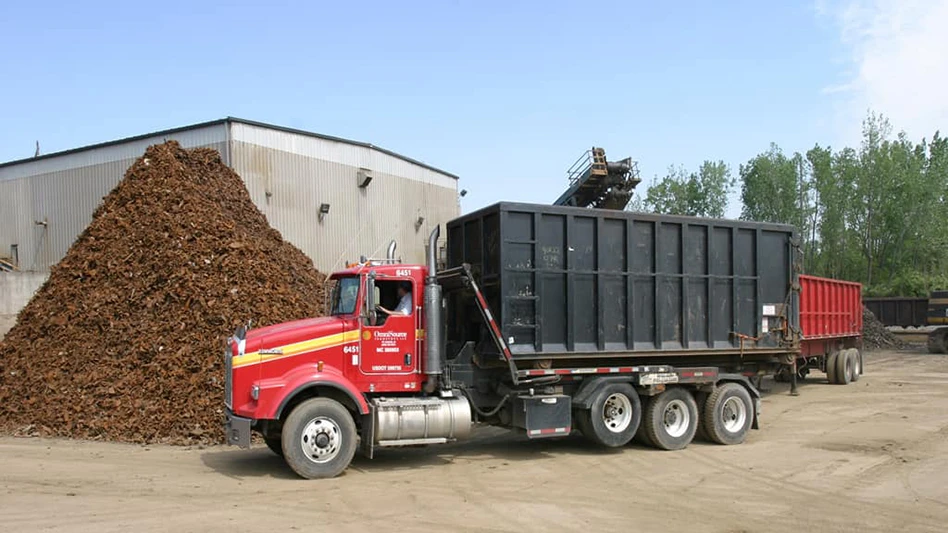
As the global president of one of the world’s highest volume electronic scrap recycling companies, Steve Skurnac could focus on any number of topics when making a presentation at an industry conference.
When addressing delegates at the 2015 Electronics Recycling Asia event, which took place in November in Singapore, his 20-minute address covered the status of e-scrap regulations in the U.S., and the portrayal was far from flattering.
Part of Skurnac’s message was that Sims Recycling Solutions (SRS), the company he helps manage, and other electronics recyclers in the U.S. are facing a patchwork of different state regulations that make it hard to achieve regional let alone national scale when trying to craft a business model.
When metals prices were high, which helped to provide an incentive to market-based recycling, this confusing regulatory landscape was difficult enough. With metal prices having fallen, it is likely to create a crippling disincentive and a firm barrier to raising the electronic scrap recycling rate in the U.S., he said.
STATES OF CONFUSION
Although roughly two-thirds of the world’s population lives in areas where there are laws offering either incentives or mandates to recycle obsolete electronics, large sections of the United States fall into the remaining one-third of the planet with no such laws in place, Skurnac said.
Skurnac serves as the global president of SRS, based in West Chicago, Illinois, and in that role he spent about three years working in the United Kingdom, where the European Union’s WEEE (Waste Electrical and Electronic Equipment) Directive regulatory framework applies. He also worked in California for several years, including when that state introduced its comprehensive electronics recycling system.
In Singapore, Skurnac provided an overview of the numerous state end-of-life electronics recycling systems in place in the U.S., where no national legislation governs the practice, despite the country being the world’s largest generator of e-scrap by volume.
However, Skurnac said, 25 of the 50 states have take-back laws of some kind on their books, though the comprehensiveness of these laws varies widely. California has one of the most comprehensive and adequately funded laws, he said, but it also has proven susceptible to fraud. “There is an economic incentive for unscrupulous players to bring in material from outside the state,” Skurnac commented.
California is the only state that charges an advanced recovery fee (ARF) when consumer electronics are purchased. The fee helps fund e-scrap collection and recycling.
Of the remaining 49 states, 24 of them have some variation of an extended producer responsibility (EPR) law, he said.
These laws, however, can vary widely, and a multistate operator such as SRS must navigate 25 different systems to achieve compliance.
Even with many EPR laws in place, “It’s still very easy to landfill this material,” Skurnac said, pointing out that 30 of the 50 states have no landfill ban on obsolete electronics.
In the first quarter of 2016, reports of collection efforts being halted by local governments and retailers seem to point to the notion that with lower metal prices removing one incentive for recycling, more electronic scrap almost is certainly heading for landfills rather than to recycling plants.
Luzerne County in Pennsylvania suspended its recycling program in March 2016, in part to see how it could comply with that state’s electronics recycling law without running into escalating costs.
Similar issues are facing administrators in Cattaraugus County in neighboring New York, where the county’s attempts to properly handle devices with cathode ray tubes (CRTs) has encountered escalating costs.
To what extent materials will end up completely out of the recycling loop will depend in large part on which state the computer, cellphone, television or other device has reached the end of its useful life.
WHO’S DOING WHAT
According to Skurnac’s summary of the state-by-state situation, the 25 states with some kind of take-back law are predominantly located in the Northeast, the Great Lakes region or the Pacific Coast.
The South and the middle of the country (with exceptions that include Texas, Oklahoma and Utah) are largely devoid of statewide legislation either mandating or supporting the diversion of obsolete electronics from landfills.
The differences in the 25 laws that have been passed fall into several categories, including which devices are covered; whether new product buyers, manufacturers or retailers pay a recycling fee; if any fee is collected; whether recycling firms must register to take part in a state system; and whether some items are banned from being landfilled.
California is alone in charging device purchasers via its ARF, while other states have established systems to collect funds from original equipment manufacturers (OEMs) who sell computing, telecom and home entertainment products in the state.
Skurnac cited Maryland, North Carolina and West Virginia as three states where “manufacturers must register with the state and pay a fee.” That registration fee can be reduced if the OEM provides its own take-back service, he added.
Several other states have required OEMs to “have a take-back program in order to sell products in the state,” Skurnac said, adding that mail-back service meets the requirements of these state laws. States with such laws include Michigan, Missouri, Oklahoma and Virginia, and Hawaii and Texas for IT equipment.
Similar systems, but ones that assign take-back volume obligations to OEMs based on their sales within the states are in force in Illinois, Indiana, Minnesota, Pennsylvania, South Carolina and Wisconsin, and in Hawaii and Texas for televisions.
Manufacturers have a greater obligation to get involved in collecting in the take-back systems established in New Jersey, New York and Oregon.
Contrarily, the activities of electronics recyclers in Connecticut, Maine, Rhode Island and Vermont are more actively managed by these states, with each state presenting OEMs with their costs to fund recycling based either on their sales market share or the percentage of their devices by volume entering recycling facilities.
Finally, Washington requires OEMs to play the lead role in selecting and subsidizing the cost of recycling covered devices generated in that state, while Utah simply requires a “public information program” and a submitted report by OEMs of any take-back activities in which they engage.
Because of this wide variation in state laws, Skurnac said, even though a cluster of states in the Northeast or Upper Midwest may have legislation in place, the guidelines or systems are so different that using the same business model on both sides of a state line is impractical.
HALTING AT THE STATE LINE
The difficulties in building economies of scale likely will remain in the electronics recycling sector in the U.S. in the current situation, according to Skurnac.
Regarding which devices are covered, some states may have focused narrowly on CRTs and other video display devices, while “others have up to 17 different electronic products,” he remarked.
Where material is generated is another source of divergent regulations, with states having focused in varying degrees on households, small businesses, large businesses, schools and government agencies.
As well, adjacent states may “have different program start dates each year,” Skurnac said, adding one more record-keeping headache for a recycling firm like SRS that tries to conduct business in several states.
“As a collector, you can’t even use the same business model in different states,” he said. “This is what happens when you don’t have national legislation but instead have different states with good intentions.”
Although the problem seems clear to see, Skurnac said the situation likely will not change soon in the U.S. “There is no political will in any way, shape or form in the near future, in my opinion” for national legislation to pass in the U.S., he said. “It’s a difficult situation right now. The U.S. could learn a lot from the European experience, but it’s unlikely to happen.”
Get curated news on YOUR industry.
Enter your email to receive our newsletters.

Explore the April 2016 Issue
Check out more from this issue and find your next story to read.
Latest from Recycling Today
- Returpack reports increased DRS activity in Sweden
- Trade groups align against European export restrictions
- Construction, auto sectors show mixed signals
- Politics in Turkey threaten recycled steel outlet
- Toppoint Holdings expands chassis fleet
- Lego creates miniature tire recycling market
- Lux Research webinar examines chemical recycling timetables
- Plastics producer tracks pulse of wire recycling market





